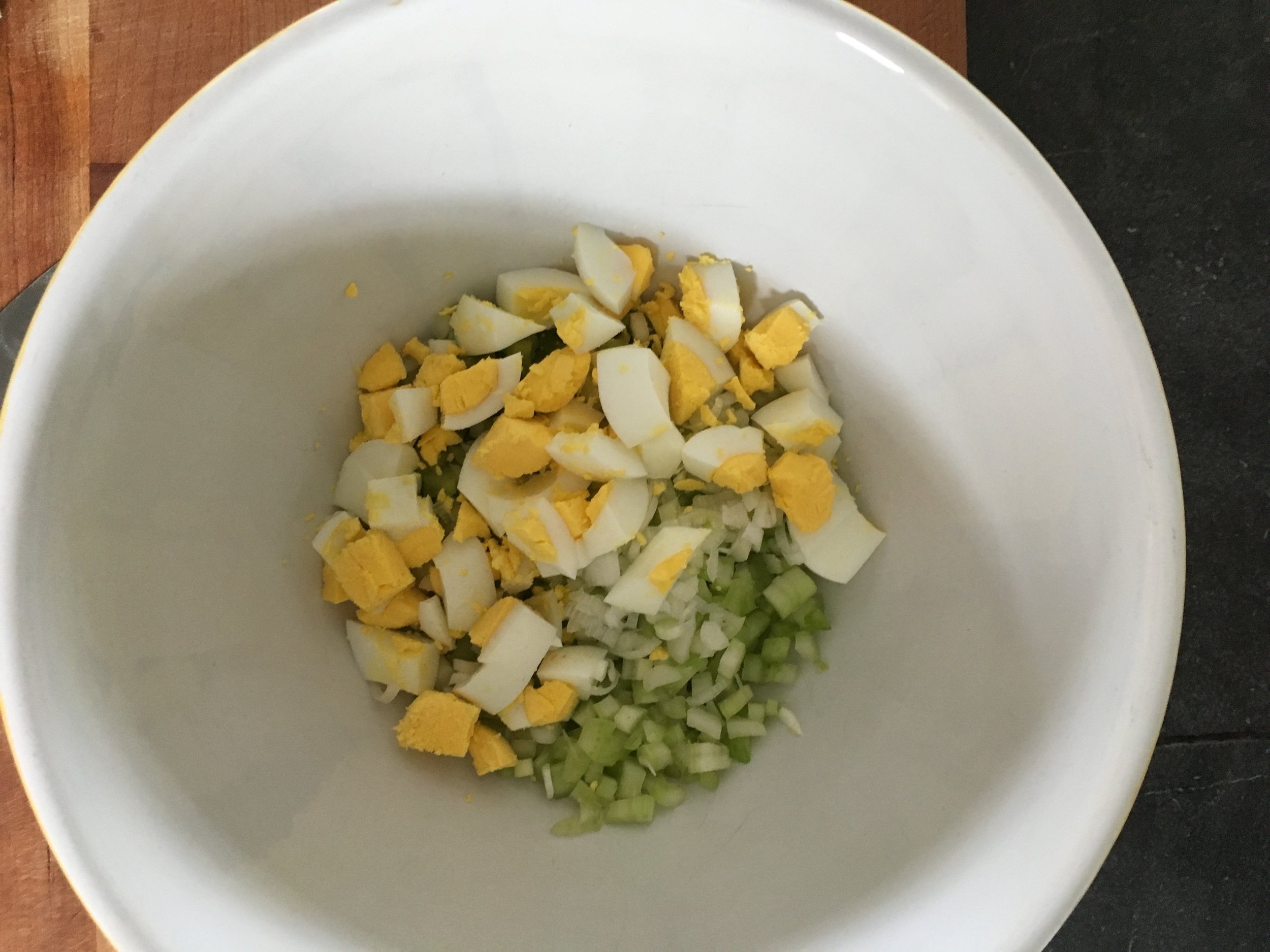Everyone fantasizes about what sort of adult you will be when you’re not one yet. Some might imagine fancy cars and white weddings. Or winning the lottery, rising up the corporate ladder, helping people, becoming famous. We all have different definitions and ambitions of what it means to be grown up. I used to dream about living in a bohemian, high-ceilinged Brooklyn apartment, casually pulling out a membership to the Met from my wallet, and having all my books in a real bookshelf, alphabetized. I’m about the little things, I guess.
So it’s no surprise that in college, my friend Rachel and I once agreed upon the milestone of always having certain foods in your house, and how that would mean you were finally an adult. (Weirdos!) I think we got to discussing this when in our efficiency kitchen sophomore year, where we had nary a scrap of food, exempting a half-eaten can of frosting. For me, these grown-up-making foods were the things my mom always stocked up on: a bag of onions, a head of garlic, lemons, parsley. As a college student, focused mostly on boyfriends and paper-writing, it seemed like the height of maturity to prepare for your future self that way, confidently, without even knowing what you might be cooking.
Now, many years beyond that conversation, if I don’t have these things in my kitchen, I feel a bit panicky. What doesn’t start with onions and garlic? What food isn’t better when finished with chopped parsley or a squeeze of lemon (or a scrape of zest)? I do indeed get a sense of domestic satisfaction, and joy, honestly, out of having these always at my disposal.
What I didn’t imagine is that I would also be the sort of adult who borderline obsesses over how to use it all up when the clock starts ticking—i.e. the slow softening of your onions, sprouting of your garlic, caving of your lemons. While lying in bed at night, others might imagine themselves driving Ferraris through sunsets. I consider what to do with the wilting parsley in my crisper.
Parsley seems to be the biggest timebomb of the pantry. It’s sturdy, and in a cold produce drawer in the fridge, could last over a week. But if you just sprinkle it over finished tomato sauces, sautéed chicken thighs, etc., you are going to have to reckon with a half bunch at some point in a more engaged way.
My solution: an ultra-satisfying combination of both using up the end of something (watch out almost-finished shampoo, I’m not done with you yet) and making something out of almost-trash that actually adds tremendous value to your meal. Green sauce.
Every culture seems to have one: a loose, raw sauce made mostly of chopped fresh herbs and olive oil, to be spooned over steaks, fish, eggs, grilled veggies, etc. Sometimes they are mild, sometimes very spicy; some use parsley, some use cilantro, basil, or other soft herbs. The executions of these individual sauces are still likely quite distinctive from cook to cook, but I’ve created a little reference chart to highlight some of the big differences between a handful of my favorites.
A very informal chart of green sauces from around the world:
Mine is a loose mash up of all the ones I know, picking and choosing ingredients as my tastes and pantry dictate. The idea is not to have a tried and true recipe, per usual, but a technique that is flexible enough that I can fit what I have around into my final product. Have a bunch of dill and nothing to do with it? Make a green sauce. Have some anchovies leftover from opening a can? Make a green sauce. It’s making something special, while making do, an ethos that really resonates with age.
Ever Adaptable Green Sauce
Quantities are approximate and just listed to demonstrate broad proportions—this is not about measuring! Use what you have, and balance it out by taste.
Green sauce is delicious on top of a grilled steak, a sautéed piece of fish or chicken, roasted veggies, etc. It’s also great on a sandwich. I used up the last of it to dress chopped hard boiled eggs for a mayo-less egg salad, and it was scrumptious—just added a dollop of pickle relish and some diced celery; this tactic would work great for chicken or potato salad too.
In a small bowl, mix together:
- 1/2 c to 2/3 c whatever soft herbs you have* (soft stems are fine), chopped fine
- 1 fresh hot pepper (fresno, serrano, jalapeno, etc.), minced, or red pepper flakes, or hot paprika, to taste
- 2 scallions or a shallot, minced (optional)
- 1 garlic clove, grated
- 1 to 4 anchovies, finely chopped
- 1 T capers, chopped
- Zest of 1 lemon and juice of half, or 1 t ground preserved lemon and 1 t brine, or 1 t light-colored vinegar
- A squeeze of honey (optional)
- Olive oil to saturate/cover and make saucelike
Mix together and taste. (If you are in a rush, you can dump all in blender or small food processor—but I like the more rustic hand chopped texture.) Adjust with additional of any ingredient until it tastes well balanced and delicious. As long as there is enough oil to cover everything, it should last in the fridge for at least a week.
Other things to do with leftover herbs:
- Herb butter
- Herb pesto—it’s not just for basil!
- Green goddess dressing
- Add whole leaves (especially parsley) to green salads and grain salads
- Chop finely and freeze—break off as needed and add to sauces, stews, pastas, etc.
* It’s good to have a large proportion be parsley or cilantro, which are a bit more mild, and a smaller amount of dill, mint, oregano, basil, chives etc.





